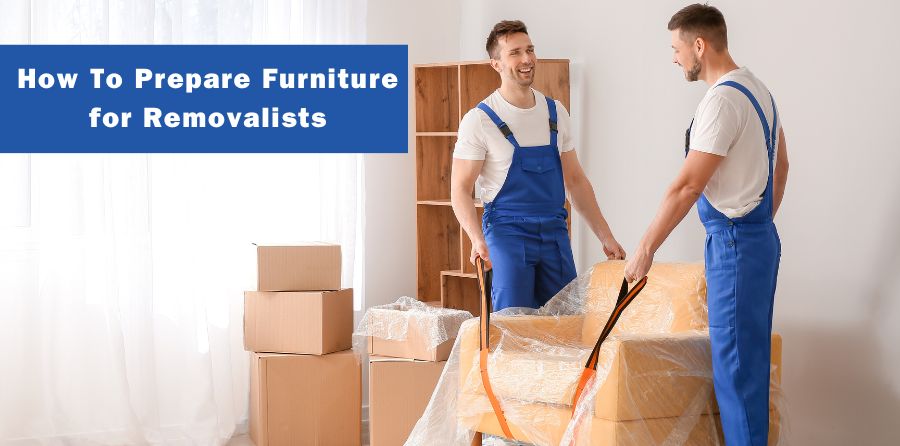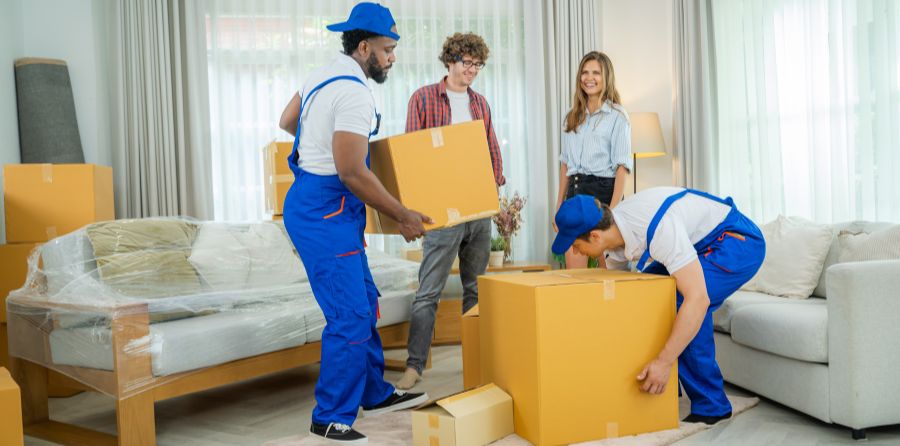Moving can be pretty exciting and challenging, especially when it comes to dealing with furniture. Whether you’re relocating to a new home or office, getting your furniture ready for removalists is super important to make everything go smoothly and avoid any last-minute stress. In this blog, we’ll explore how to prepare furniture for removalists. With such steps, it gets easy to manage your furniture and its relocation.

Here Is How To Prepare Furniture for Removalists
You must discuss your plan with your removalists to accordingly prepare your furniture for the move. However, you can also follow these steps to prepare your furniture for removalists.
- Early Planning for Furniture Preparation in Moving:
- Begin with an Inventory:
- Essential Packing Supplies:
- Disassemble Large Furniture Items for Safe Transport:
- Safely Packing Fragile Items:
- Efficient Labeling and Numbering Boxes for Seamless Unpacking:
- Prioritize Effective Communication with Removalists:
- Properly Wrap and Secure Furniture:
- Measure Doorways and Spaces Before Moving Large Furniture:
- Efficient Unpacking and Reassembly:
It is essential to plan your move early and allow sufficient time for furniture preparation. Start packing well in advance to avoid last-minute stress. Planning ensures a smoother transition and minimizes the risk of rushing on moving days.
Before you start preparing your furniture, it’s essential to make a detailed inventory of all the items covered for relocation. This list will help you keep track of your belongings and make sure nothing goes missing during the move. Pay particular attention to identifying any valuables or delicate items that warrant special care and handling.
Assemble all the requisite packing provisions, including quality moving boxes in various sizes, sturdy packing tape, protective cushioning such as bubble wrap, durable plastic wrap and soft furniture blankets or moving pads to prevent scratches and dents. Ensuring these essential items are readily available will not only facilitate the packing process but also enhance the efficiency and safety of your furniture.
Consider disassembling large furniture items like bed frames, tables, and bookshelves whenever possible. This not only simplifies the transportation process but also reduces the risk of damage during transit. It makes them easier to move and keeps them safer. Keep all the little parts like screws and bolts in labeled bags so you don’t lose them.

It is important to take extra precautions when packing fragile items such as glass tables and mirrors, such as bubble wrap or packing paper. Once the wrappings are firmly in place, use packing tape to secure them. To prevent any shifting during transit, carefully place fragile items into sturdy cardboard boxes, cushioning them with foam or crumpled paper to prevent any shifting.
Make sure that each box is marked with its contents and designated room. It will save a lot of time when you are unpacking them later on at your new location. You can also write numbers on the boxes so that you can place them in their respective areas. You can just glance at the boxes and know exactly where they need to go.
You must have effective communication with your hired removalists before moving day. Take the initiative to bring up any specific requirements or rules about how your furniture should be handled. It’s important to give them a thorough inventory list so they can plan appropriately and understand the scope of the work. In addition, feel free to ask any questions or concerns you might have regarding the relocation process. A smoother and more organized relocation experience is the result of effective communication between you and the removalists.
To protect your belongings from dents, scratches, and other potential damage during transit, use furniture coverings or padding. Use foam cushioning or bubble wrap to give an additional layer of protection for delicate surfaces. Don’t forget to use packing tape or plastic wrap to tightly secure the padding to ensure it stays in place.
Make sure all doorways, hallways, and stairwells are large enough for easy access before relocating large furniture items. This precautionary step will prevent any unexpected obstacles on moving day.
As soon as the furniture arrives, get ready to unpack and reassemble it. Use the inventory list to check items. Direct removalists to designated rooms for efficient unpacking. For immediate comfort, assemble the important furniture first. For reassembly, refer to the photos and the labelled hardware bags. Planning this process ensures a smooth transition to your new home.
By following these how to prepare furniture for removalists steps, you can ensure that your furniture is properly prepared for removalists and arrives at your new destination safely and securely. If you plan well and pay attention to details, moving can be easier and less stressful.
Tips for Safe and Easy DIY Furniture Moving

- Remember to lift with your legs, not your back, when moving heavy furniture to avoid hurting yourself.
- Clear pathways of any obstacles like rugs or cords to avoid tripping hazards while transporting furniture.
- Wear sturdy, closed-toe shoes with good traction to provide stability and protect your feet during the moving process.
- Grab some moving straps or harnesses to make carrying heavy stuff easier and save your muscles.
Benefits of Hiring Professional Packers
- Professional packers are skilled at rapidly and proficiently packing your furniture, allowing you to focus on other tasks.
- With their knowledge and expertise, professional packers use top-quality packing materials and techniques to make sure your furniture stays safe during the move.
- Relying on professional packers can ease the burden of moving stress. You can rest assured knowing that your furniture is well-managed by capable professionals.
- Professional packing services usually have different choices available, letting you adjust their help to fit what you need and how much you can spend.
- Professional packing services often include insurance coverage, which adds an extra level of protection for your belongings in case they are lost or damaged during the packing and moving process.
Conclusion
Preparing furniture for removalists involves early planning, creating an inventory, gathering packing supplies, disassembling large items, safely wrapping fragile items, labelling boxes, communicating with removalists, measuring doorways, and ensuring efficient unpacking and reassembly. Whether you choose to handle it yourself or hire professionals, prioritizing protection and organization ensures a smooth and stress-free moving experience.When considering furniture removal cost, weigh the benefits of professional assistance against the DIY approach.










